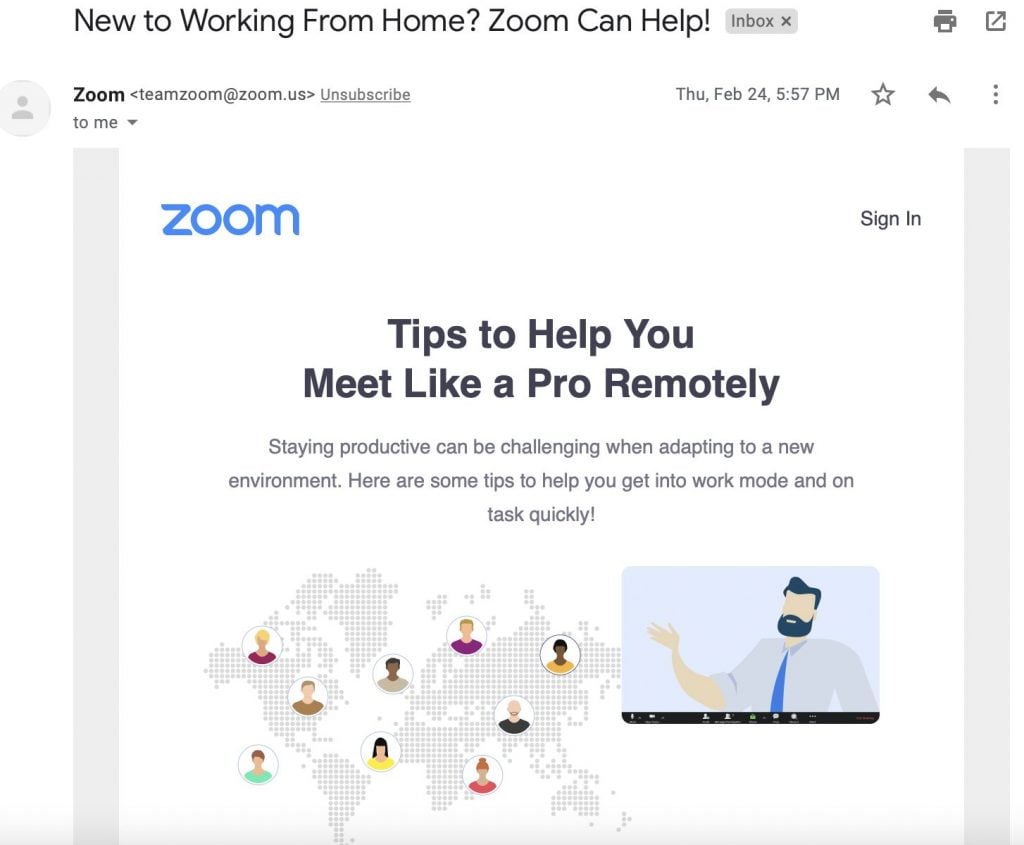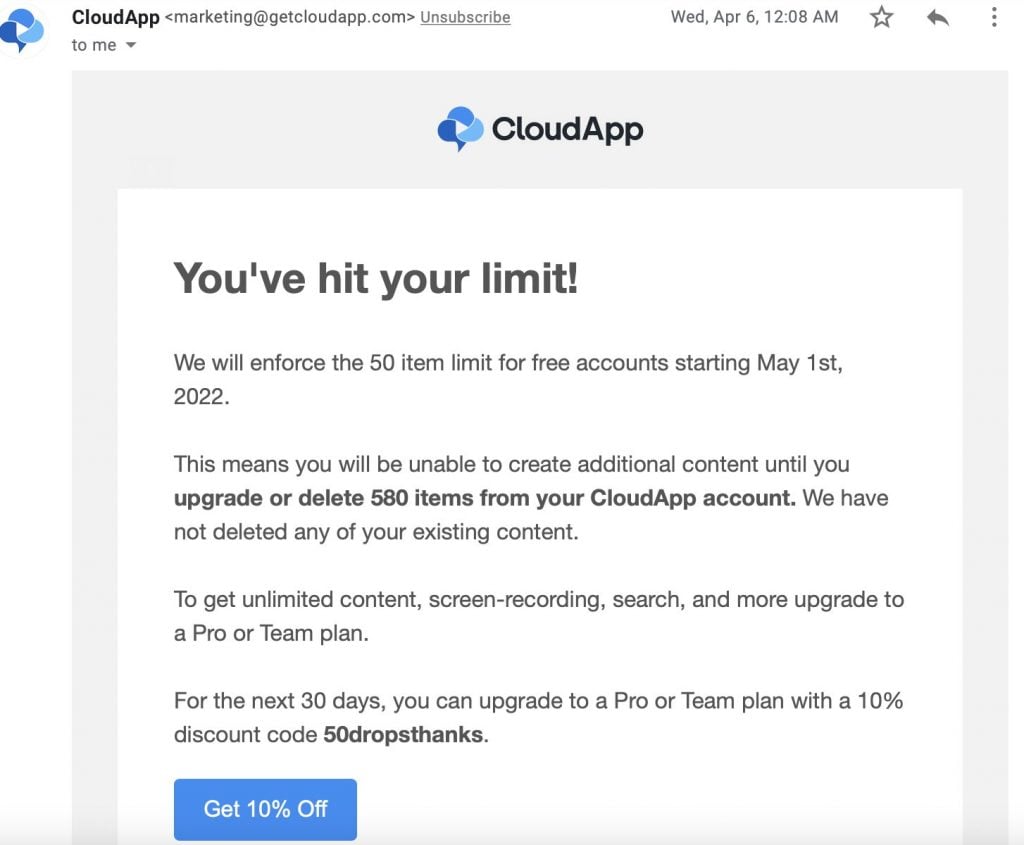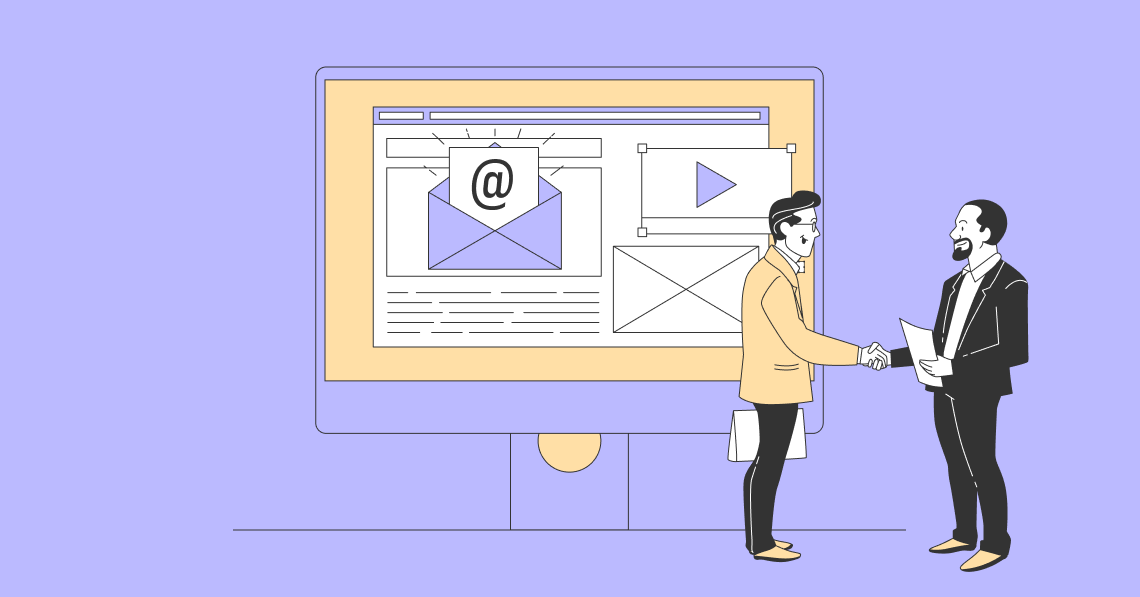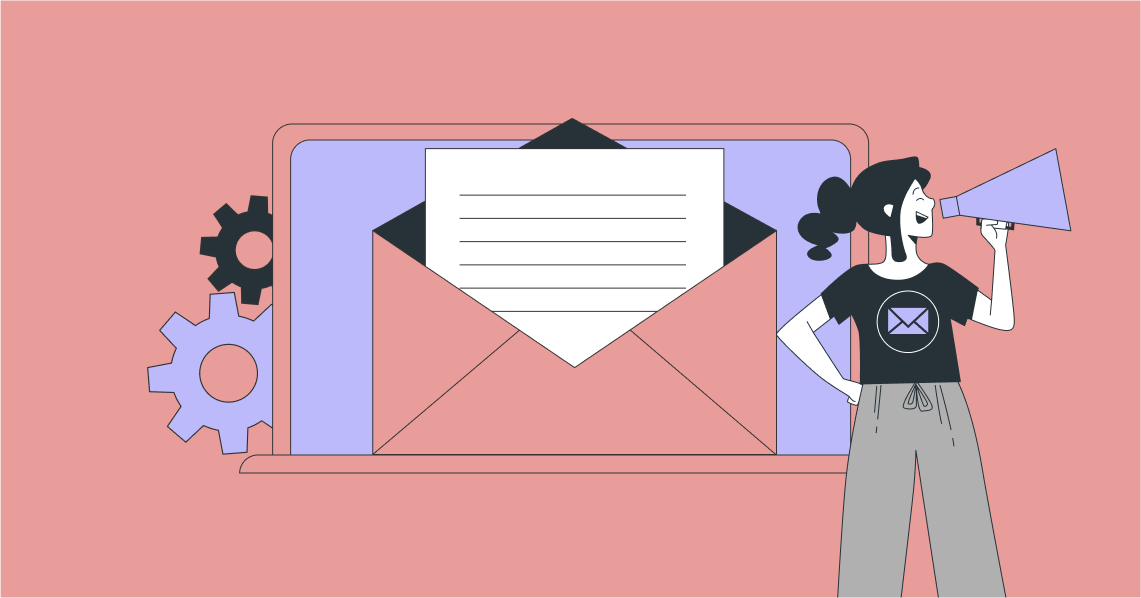With B2B buyers having to undergo a longer buying journey, they often need more nurturing. This makes email marketing such a crucial part of your B2B marketing strategy as it offers you the perfect tool to engage and nurture your leads until they eventually convert into paying customers. In this post, we provide you with eight effective tips and best practices that will help you win at B2B email marketing. Let’s get started.
8 Tips and Best Practices to Win at B2B Email Marketing:
- 1: Use Segmentation for Increased Relevance
- 2: Plan Your Campaign for Different Stages
- 3: Craft Click-Worthy Subject Lines
- 4: Write Enticing Email Copy that Adds Value
- 5: Create Templates to Streamline Your Efforts
- 6: Leverage Automation to Save Time
- 7: Deliver Your Emails at the Right Time
- 8: Finish with a Compelling CTA
- Frequently Asked Questions
1: Use Segmentation for Increased Relevance
When you’re sending one email to everyone on your list, chances are that most of them won’t convert. This is because the email is only relevant to people who are looking for a specific solution or are at a particular stage in the buying journey. Keep in mind that your mailing list is made up of different kinds of B2B buyers who hold different positions within their organizations and have different pain points that need addressing.
This makes it crucial to segment your mailing list to ensure that recipients receive emails that are most relevant to their roles and needs. So, you’d need to separate initiators and users from actual buyers and decision-makers, for starters. That way you can send product demos and how-to guides to one group while another group receives testimonials and cost analyses depending on what’s most relevant to their role.
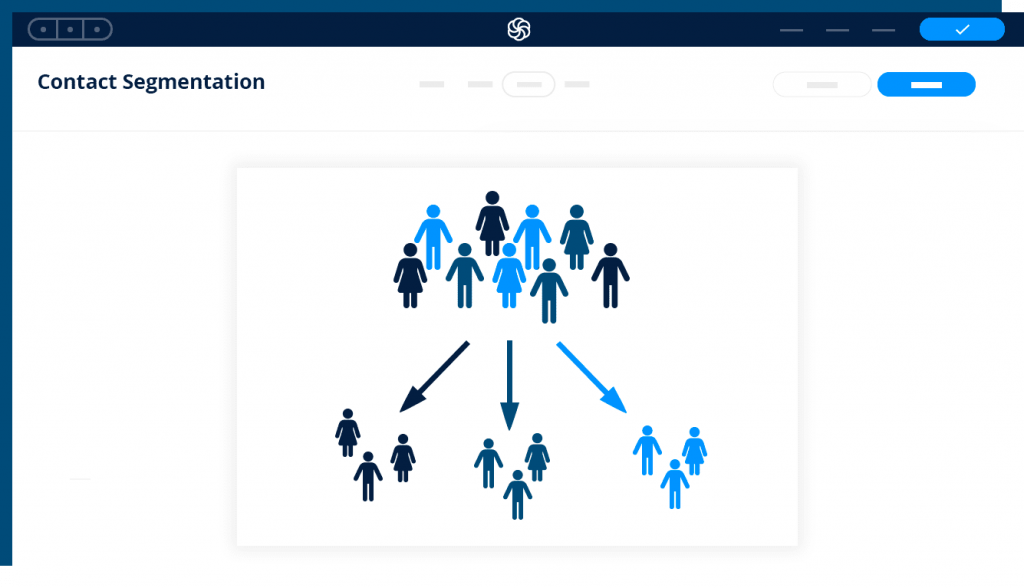
Source: sendinblue.com
Develop multiple segmented lists so you can customize your content and offers for different recipients. This eliminates the need to customize emails at the individual level while helping you deliver more targeted messages that address the needs and pain points of each recipient.
2: Plan Your Campaign for Different Stages
Not every email recipient is in the process of considering a purchase; others may be much farther up in the sales funnel and are just starting to learn about your product. In many cases, your marketing emails will also end up with new or existing customers. This is why it’s important to consider the different stages of your buyer’s journey when planning a B2B email marketing campaign.
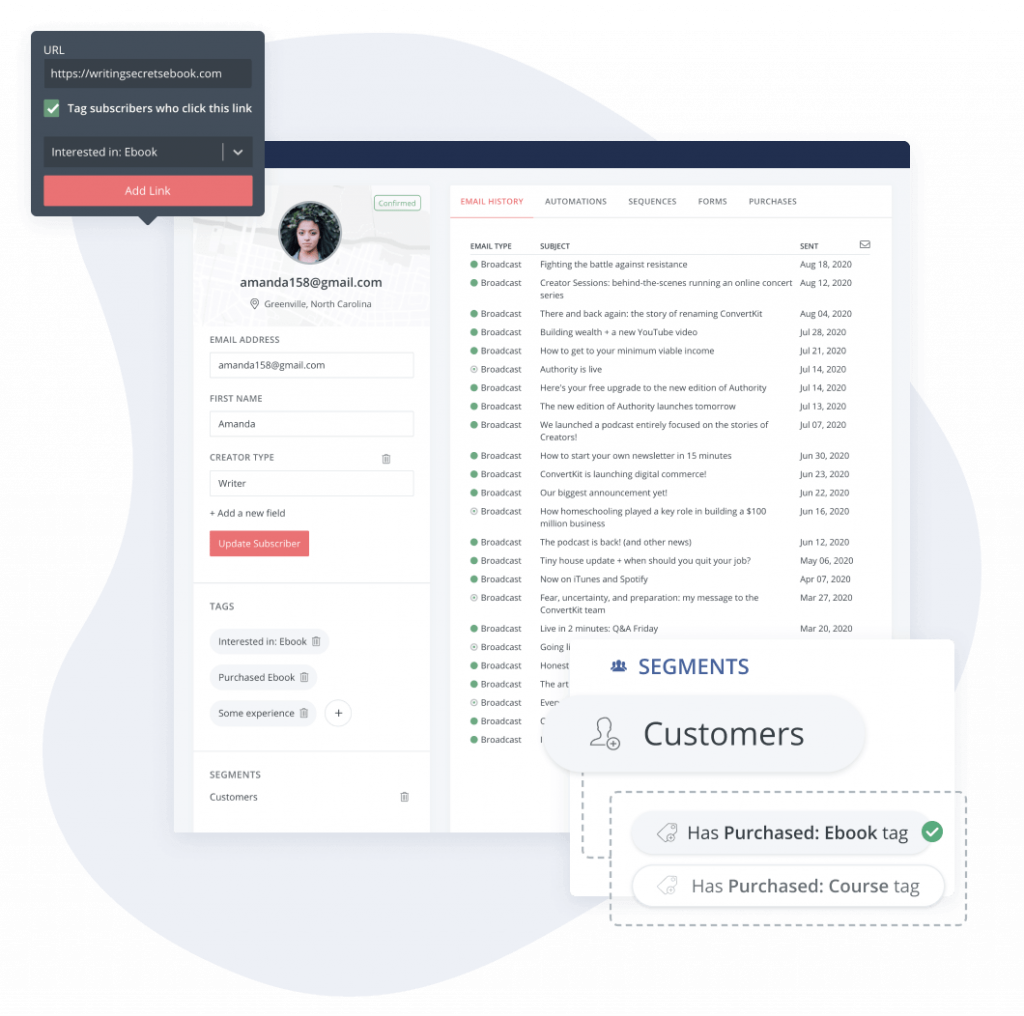
Source: convertkit.com
That way, you can deliver content that someone might be interested in depending on where they are in the buyer’s journey. Here are a few examples of the types of content that you can share for each stage of the buyer’s journey:
- Awareness – People at this stage of the journey are just learning about your brand and products or services. They’re not yet serious about making an actual purchase. Educational content such as thought leadership articles, eBooks, research reports, and how-to guides are some ways you can engage them and build a connection with them.
- Consideration – At this stage of the journey, people are interested in your product but are still not ready to decide unless they have more information to convince them. This is when you can establish trust in your product by providing them with case studies and customer testimonials like in the following email from Asana.
- Decision-making – By now, the target audience is convinced about your product’s value. Now they’re in the process of deciding and are considering whether the product is within their budget and what kind of return they can expect. Providing them with free trials and discount offers could help push them toward the right decision.
- Retention – Your B2B email marketing efforts shouldn’t just stop because someone has purchased your product. Continue your campaign to retain your customers by getting them to engage with your product or renew their subscription. Feature updates and product tutorials are some ways to encourage better customer retention.
Many email marketing tools also come with smart filters so you can exclude specific recipients from your emails. That way, you won’t accidentally pitch your product to someone who’s recently purchased it.
3: Craft Click-Worthy Subject Lines
Your subject line is one of the first things that people will notice about your email. As such, it could be the factor that convinces them to either open your email or send it straight to the spam folder. In fact, 69% of recipients report emails as spam because of the subject line. Meanwhile, catchy subject lines are the reason why 33% of recipients open their emails.
There’s no underestimating the importance of subject lines in your B2B email marketing efforts. Here are a few suggestions on how to nail your email subject line:
- Add some sort of personalization–whether it’s by including the recipient’s name or using second-person references like “you” and “your.”
- Keep it brief so people can read the entire subject line. The magic number is around 60 characters.
- Descriptive subject lines are often a good idea as they come across as more trustworthy and less spammy. The idea is to communicate the specific benefit or deal you’re highlighting in your email. At the same time, they should still be brief enough to build curiosity and entice recipients to click on the email to read the rest of it.
- Emojis may not necessarily be the best idea for B2B marketing emails. Use them at your discretion depending on whether they align with your brand personality and target audience.
- Don’t be afraid to test different versions of your subject line. This will help you gauge the kind of language, tone, and offer that resonates the most with your audience.
Take, for example, the following subject line from The Social Intelligence Lab. It’s descriptive enough to let recipients know what the email is about. Yet it only gives a brief preview of what’s in store so recipients will want to open and read the rest of the email. They’ve included one emoji to make the subject line stand out, though it’s not too unprofessional that it’d ward off the brand’s B2B recipients.
Email marketing platforms like MailChimp offer subject line tester tools like the Subject Line Helper, which provides you with real-time feedback on how to refine your subject lines. This tool will advise you on whether your subject line is too long or contains too many emojis. It even shows you how your recent subject lines have performed so you can get an idea of what works.

Source: mailchimp.com
4: Write Enticing Email Copy that Adds Value
While the subject line is the reason people open your email, the copy is what makes them stay to read the rest of your email. As such, it could be the reason why people decide to buy your product, renew their subscription, or keep engaging with your brand. So, it’s important to create an email copy that follows through on the promise that your subject line has made.
Although you’re targeting a B2B audience, you’re still speaking to human beings. Make sure you keep the tone of the copy conversational and friendly so that your recipients will feel as if you’re talking to them one-on-one.
More importantly, make sure your email adds value. The copy should be able to highlight how the product or offer can add value to their lives or their organization. For example, if you’re selling an email marketing tool, your email should focus on how the tool can help recipients to save time or increase their open rates rather than simply talking about the features.
For example, the following email from Zoom targets professionals who are working from home. The content of the email offers tips on how to use the tool effectively, helping to highlight the use case and benefits of the product. It’s also a great way to encourage people to engage more frequently with the tool.
5: Create Templates to Streamline Your Efforts
It’s time-consuming to have to compose a brand-new email from scratch every time. Even though emails are typically just a few hundred words long (or shorter), you want to make sure they’re structured cohesively and compelling enough to draw in your recipients. So, instead of trying to write an entirely new email for each and every recipient, consider using templates to simplify the process.
Create an entire library of templates for different types of transactional B2B emails that you typically have to send. You could have templates for welcome emails and thank you emails as well as newsletters, webinar invitations, survey emails, product/feature update notifications, research report emails, and so on. That way, you can easily customize the template you need and quickly send out your email at the right time.
Many email marketing tools will come with template builders so you can design stunning email templates to reuse multiple times. Make sure your templates are designed to encourage flawless scanning so that recipients can seamlessly follow the information in your email copy. You can even find pre-designed templates that are already optimized for seamless reading, so you can opt to use those and customize them for your own needs.
6: Leverage Automation to Save Time
Let’s face it–B2B email marketing is a time-consuming process. There’s a lot that goes into segmenting your list, planning your emails, and sending out the right emails at just the right time.
This is where automation can save you by taking care of the time-consuming and mundane aspects of your email marketing efforts. For instance, you can find automation tools that will automatically create segmented lists based on form submissions and other behavioral signals such as downloading a piece of content or attending a webinar.
Moreover, these automation tools will automatically send out timely emails triggered by audience behavior. This could be welcome emails sent out to new subscribers, confirmation emails sent out for new purchases, follow-up emails sent out when someone visits a certain page, and so on.

Source: sendinblue.com
You can even build automated email funnels where you create custom paths based on multiple events, conditions, and actions. By combining these different factors, you’ll end up with a fully customized customer journey that makes it easier to automatically deliver the most relevant offers to each recipient.
7: Deliver Your Emails at the Right Time
Just like with social media marketing, timing is everything when it comes to B2B email marketing. You have to reach your recipients at a time when they’re most likely to notice and engage with your email. Otherwise, you risk having your email buried beneath a pile of promotional and personal emails from other senders.
Test different send timings to see when you’re most likely to get higher open and click-through rates. This will help you narrow down the best timing for your marketing emails. You could even test different timings between different customer segments to see if it makes a difference.
Many email marketing platforms offer solutions to optimize your send time. They provide you with suggestions on when to send your emails for the best deliverability and engagement based on previous email performance. This simplifies the process of finding a send time that works best for your business.

Source: mailchimp.com
8: Finish with a Compelling CTA
Finally, your marketing emails should be clear about what you want the recipients to do next after reading your email. Whether you want them to read your latest blog post, download your new research report, or grab a limited-time discount offer–be explicit about the next steps.
To avoid any confusion, try limiting your calls-to-action (CTA) to just one. This is particularly true for shorter emails in which you’re promoting an offer or specific product. Longer emails like newsletters may require a few CTAs spread out throughout the email.
For example, the following email from CloudApp encourages the recipient to “Get 10% Off.” The CTA is clearly highlighted with a blue button. Plus, it’s direct and concise, making it clear exactly what they want the recipient to do.
Start Winning at B2B Email Marketing
B2B email marketing doesn’t have to be complicated. With the right B2B marketing tools and email strategy, you can flawlessly execute an email marketing campaign that gets clicks and conversions. Make the most of the eight tips and best practices we’ve shared above to start winning at B2B email marketing.
Frequently Asked Questions
Is email marketing good for B2B?
Email marketing is an effective tool for B2B companies to engage and nurture their audience.
How can I improve my B2B email marketing?
You can improve your B2B email marketing by delivering high-quality relevant content and using automation to save time.
What are the top email marketing best practices?
Some of the top email marketing best practices include segmenting your list, planning your campaign for different stages of the customer’s journey, writing enticing subject lines and email copy, and ending with a strong CTA.
How do I write a good B2B email?
You can write a good B2B email by highlighting the value of the product or offer for the recipient rather than simply listing the features.
How do I start a B2B email campaign?
You can start a B2B email campaign by planning around the different stages of the buyer’s journey and targeting specific customer segments for each campaign.

